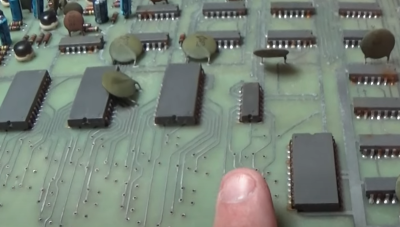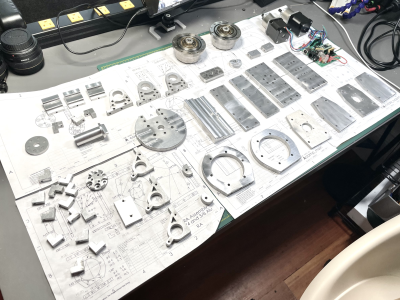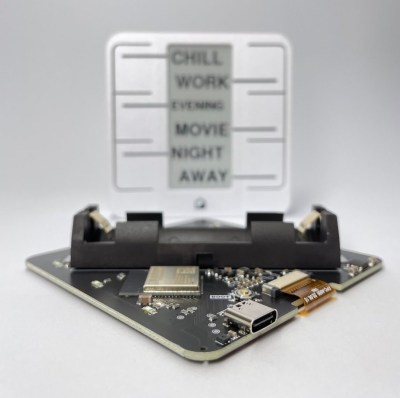[Sean] from Classic Arcade Repairs fixes classic arcade machines, and he got a request to repair a very special machine. It’s Computer Space, the first commercial arcade cabinet ever made, and loosely based on Spacewar! This grand-daddy of coin-op was a literal barn find, and was in pretty bad shape after sitting for years. All the parts appeared to be original, making them 50 years old. As you can imagine, that combination didn’t bode well for the health of the components. There’s a couple hours of footage here, but it’s invaluable troubleshooting advice, and very cool to see such an old machine being worked on.

Part one is the intro, and [Sean] started with an HP logic analyzer, just probing the many TTL chips on the board looking for floating or otherwise suspicious outputs. Figure out the obviously faulty chips and replace each with a socket and new chip. Just about every diode in the machine needed replacing.
Part two of the repair starts with a broken trace repair, and the discovery that all the ceramic capacitors on the boards were leaky. The interesting thing is that a multimeter tested those caps as having the correct capacitance, but a dedicated leak tester discovered the problem.
Part 3 shows the process of running the remaining chips through a logic tester, which found more problematic ICs. In some cases, a chip would only sometimes test as working. And strangely, one of the new, replacement chips turned out to have a problem. Though as a commenter pointed out, it could be a falling edge vs rising edge variation of the logic chips to blame. Or maybe the new chips were counterfeit. Hard to nail down.
Part 4 starts with a gotcha moment, where one of the first repairs to the board was a misstep. What appeared to be a damaged trace, was actually a factory modification (a bodge cut?). Then a lucky break really helped out, where only half of one of the 7476 chips was in use, and one of the chips on hand was only half working. Put the dead bit into the unused slot, and the machine really started to behave.
Part 5 is the victory lap, where all the components finally arrived, and everything starts working on the bench. How cool to see the old machine bleeping and blooping again.






 for anything to be seen at all, through the noise. But, this ball of rock we sit on is rotating constantly, so the only solution is to track the object of interest, to compensate. This is referred to as equatorial tracking, and allows the rotation of the Earth to be compensated for during a long exposure.
for anything to be seen at all, through the noise. But, this ball of rock we sit on is rotating constantly, so the only solution is to track the object of interest, to compensate. This is referred to as equatorial tracking, and allows the rotation of the Earth to be compensated for during a long exposure.













